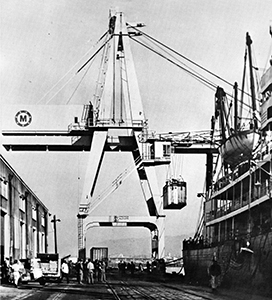Blanca Torres
San Francisco Business Times
New lofts and apartments could soon fill up the cavernous interior of a former Del Monte warehouse in Alameda, part of a developer’s vision to turn an underutilized stretch of waterfront property into a thriving district along the Oakland Estuary.
Tim Lewis Communities plans to revamp the historic, 235,792-square-foot brick-and-timber warehouse into 309 apartments and 19,000 square feet of retail as well as to build new construction on surrounding vacant land.
“We want to attract people who want to be close to the water,” said James Meek, who is leading the development for Tim Lewis Communities. “With amenities like retail and restaurants, it becomes a waterfront playground.”
The warehouse, built in 1927, extends 1,000 feet long and 240 feet wide along a curved line that makes it look like a huge brick snake. It now houses some industrial tenants such as beverage and lumber distributors. The developer hired BAR Architects to design the redevelopment with two-story apartment units, lofts and retail spaces.
Adjoining land is slated for at least 55 units of additional housing and 20,000 square feet of more retail. The units in the warehouse structure will range from one to three bedrooms, measuring between 1,150 to 1,766 square feet. Ten of the units will be designed as live/work.
The developer, a homebuilder based in Roseville, is pushing the project through the city’s approval process and is set to go before the planning commission and city council in the next few months. Meek estimates the project could break ground in mid-2015. “It’s an exciting project for the city,” said Andrew Thomas, a city planner who has been working on the development. “It’s a historic resource we’ve been trying to redevelop and preserve for many years.”
The warehouse sits on an 11-acre site adjacent to the Encinal Terminals, a 17-acre former working dock that Tim Lewis Communities also plans to redevelop into housing, retail and recreation space.
The developer sees the former terminal as a complement to the warehouse project. Both sites will connect to a future 21-acre city park that Tim Lewis Communities is pitching in $2 million to fund.
The stretch of waterfront doesn’t offer much access to the water other than a marina. The Del Monte warehouse site neighbors Marina Village, a 1.1 million square-foot office and lab space complex, and a vacant parcel known as the Chipman site that Lennar Homes is developing into 89 homes.
Meek said the developer is looking at setting up a water shuttle service to ferry future residents across the estuary into Oakland, where they can access BART via bus lines.
Alameda residents frequently oppose major new housing developments because of concerns over increased traffic via the island city’s bridges and tunnels. The warehouse project would help add variety to Alameda’s housing stock by bringing more apartments to the market.
“We have a long history of doing single family homes in this town,” Thomas said.


